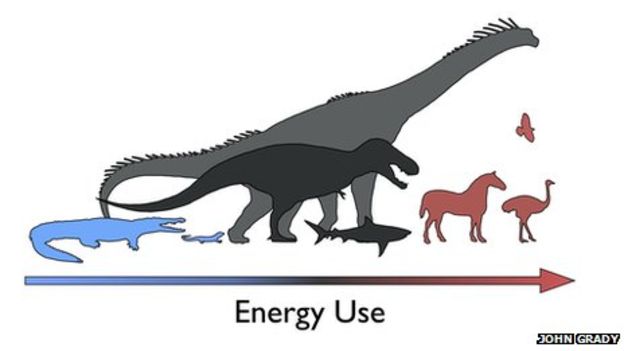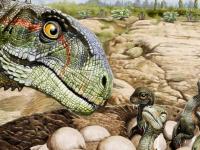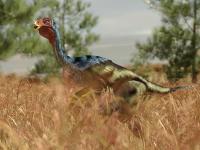Depending on the source of an organism’s body warmth, it may be classified as either an ectotherm or an endotherm. An ectotherm is an animal that warms itself primarily by obtaining heat from the environment, perhaps by sunning itself. Ectothermic animals include most fish, amphibians, and reptiles as well as most invertebrates. An endotherm is an animal that produces most of its own heat and maintains a constant body temperature even when environmental temperatures fluctuate. All birds and mammals are endotherms.
Paleontologists have struggled for years to determine whether dinosaurs were cold-blooded like today’s reptiles or warm-blooded like most modern mammals and birds.
It turns out the answer is neither. Scientists have found evidence for “mesothermy” in dinosaurs. The “mesothermy” found in dinosaurs likely allowed them to move quickly, given that they would not need to constantly eat in order to maintain their body temperature (as do endotherms). As well, the dinosaur’s mesothermic metabolic rate would have decreased the vulnerability of these species to extreme fluctuations in external temperature, allowing them to exert some control of body temperature via internal mechanisms.










